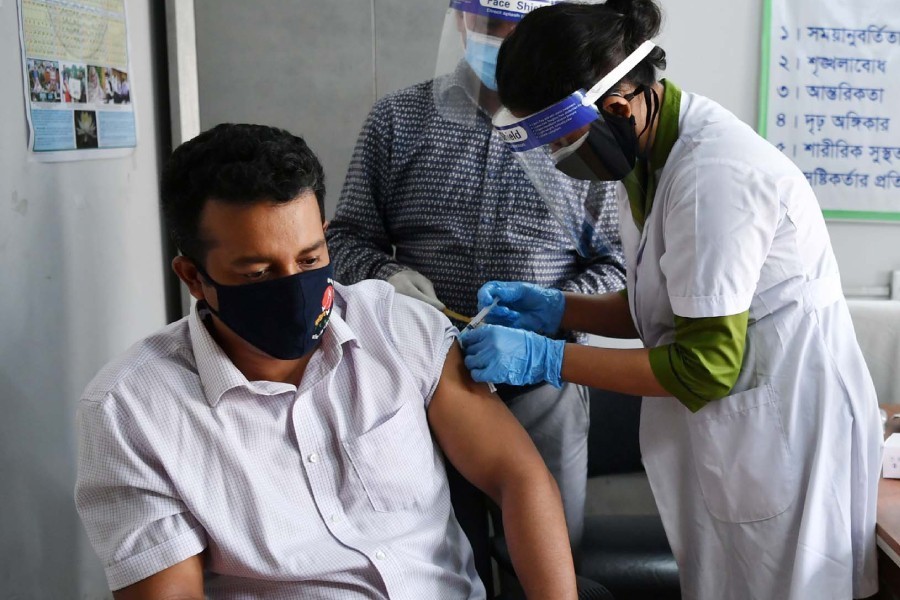Bangladesh’s pace of administering the COVID-19 vaccine is well below the rate needed to ensure that 40 per cent of citizens receive both doses by the end of the year.
It is also significantly lower than the rate needed to vaccinate 60 per cent of the population by mid-2022, according to data from the Task Force on COVID-19 Vaccines, Therapeutics and Diagnostics for Developing Countries, a group formed by the International Monetary Fund, the World Bank Group, the World Health Organization and the World Trade Organization.
Data from a new website launched by the Task Force on Friday, showed that Bangladesh’s weekly average vaccination rate was 0.11 per 100 people.
Bangladesh’s average vaccination rate was among the lowest in South Asia. Pakistan’s vaccination rate was 0.19 per 100 people, India’s was 0.31, Nepal’s 0.33, and Sri Lanka’s 1.63. Only Afghanistan, at 0.05 per 100, Bhutan, at 0.04, and the Maldives, at 0.08, had lower vaccination rates in the region. However, both Bhutan and the Maldives have vaccinated large portions of their population already, reports bdnews24.com.
In order to vaccinate 40 per cent of the population by the end of the year, Bangladesh would need a daily vaccination rate of 0.49 per 100 people, according to the Task Force. To achieve 60 per cent vaccination by mid-2022, Bangladesh would need a daily vaccination rate of 0.35 per 100 people.
Bangladesh, with a population of 164.7 million people, needs 131.8 million doses to vaccinate 40 per cent of its population and 197.6 million doses to vaccinate 60 per cent of its population. It has, by the website’s estimate, pre-purchased 158.1 million doses and has had 25.8 million doses delivered.
The Task Force estimates that, based on current delivery schedules and agreements, Bangladesh would be able to vaccinate 19.64 per cent of the population by the end of this year.
The government has said it plans to vaccinate 80 per cent of the country’s population, or 140 million people.


